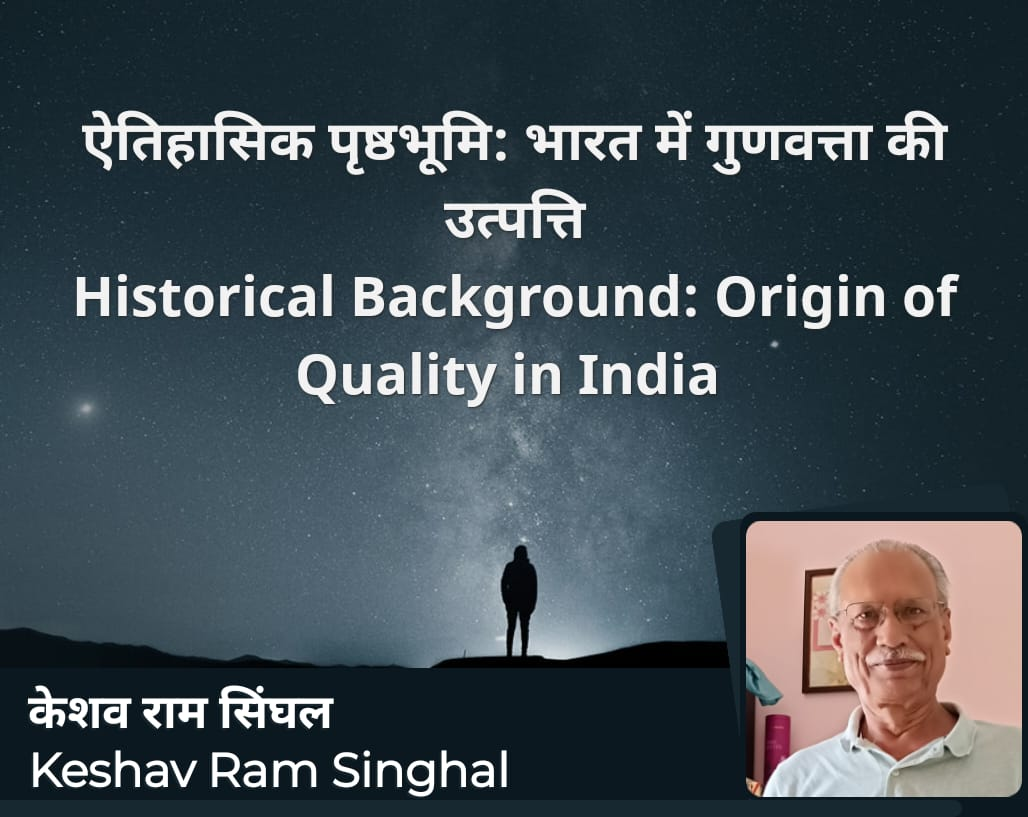Historical Background: Origin of Quality in India – 01
==============
The
concept of quality in India has evolved in different forms in different ages
and periods. Historically, quality has always been a priority in the Indian
commercial tradition. Over the ages, Indian commerce and business community
has struggled to emphasize importance to the quality of products and services.
Quality has also played an important role in religious and cultural ideology.
Historically, India has been renowned for its craftmanship and quality in
various industries, including textiles, handicrafts, metallurgy, agriculture
etc.
There
have been various discussions on the subject of quality in ancient Indian
literature. Quality has been an important parameter in the wide and varied
traditional thought of Indian literature. Ancient Indian literature books ‘Natyashastra’
and ‘Kavyashastra’ discuss quality of play and quality of poetry respectively.
Although
quality of product is not directly discussed in ancient Indian literature however,
various texts and authors provided guidelines regarding trade, commercial
policy and ethical mercantilism. For example, texts such as Mitra Vidhi,
Arthashastra and Ethics discuss business quality. For example, the
'Arthashastra' discusses the rules for the smooth conduct of wealth and trade
and the recognition of high-quality goods. In this, the parameters of quality
of construction, quality of operation, quality of production and quality of
service are given to measure the business quality. These texts encourage high
quality through business ethics and justice. Thus, ancient Indian literature
establishes the importance of quality through religious, ethical and commercial
culture. These ideals recognize the high quality of personal and social
well-being and guide business policy.
The
Arthashastra is an ancient Indian treatise on statecraft, economics and
political philosophy, written by an Indian Guru Aachaarya Chanakya (also known
as Kautilya or Vishnugupta). In the Arthashastra, there are several references
to the importance of quality control in production. It emphasizes the
significance of ensuring quality of products for economic prosperity and
well-being of the Rajya (state). The Arthashastra highlights the need for
inspections, regulation, and control over various aspects of production to
maintain quality standards. It suggests that the Rajya (state) should have a
system in place to oversee and enforce quality control measures to prevent
fraud, protect consumers, and maintain the reputation of the kingdom’s
products. Chanakya considered quality important in the manufacture of goods and
considered it the highest priority. He used to recommend encouraging prosperity
through quality in trade and commercial activities. Acharya Chanakya emphasizes
that quality is the true identity of a person / product / behaviour. Good
qualities are always appreciated. Lord Krishna has said in the Gita that one
should focus on one's karma (deeds). The way the karma (deed) is performed, the
results will be according to that. Good deeds get good results, bad deeds get
bad results. This shows the importance of quality in ancient time in India. To
know more about the quality in ancient Indian literature, readers can study
other ancient texts like Natyashastra, Kavyasastra, Dharmagrantha, Nitigrantha
and other books.
Before
the eighteenth century in India most people were living in villages and most
products were manufactured by people using their hand-skills. In general, most
artisans used to pay special attention to the customer's needs and the quality
of products while manufacturing their handmade items. In the middle of
eighteenth century, there was a move to urbanization and industrial revolution,
which witnessed mass production and machinery replacing hand-skills. But the
worker lost touch with the hand-skills resulting deterioration of work
conditions and reduction in quality. The urbanization and industrial expansion
continued through to the twentieth century. These changes were affecting
worldwide and India too witnessed change.
More
content later on ….. Please wait for the next article on this topic.
Thank
you,
Keshav
Ram Singhal
#Origin_of_Quality_in_India

No comments:
Post a Comment